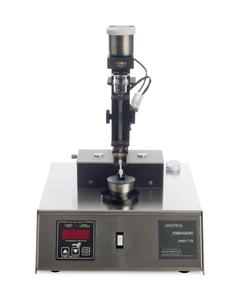
The SpectroT2FM 500 is fast because there is no delay time as sample is pumped through plastic tubing before reaching the ferrogram surface. The T2FM delivers the entire sample and all the particles contained therein onto the ferrogram surface. A crystal clear rinse is obtained without fail for every ferrogram. There are no last minute drips of oil sample onto the ferrogram leaving distracting halos around the particles when viewed under the microscope.
A bichromatic microscope is used to view and examine ferrograms made with the SpectroT2FM 500. The bichromatic microscope is equipped with both reflected (red) and transmitted (green) light sources so that the ferrogram may be illuminated from both above and below the microscope stage. With bichromatic illumination, metal particles, which reflect light, appear bright red, whereas nonmetallic particles appear green because light transmits through them.
A video camera connected to a computer displays, prints, stores and retrieves ferrographic images. Comparison of old ferrograms with ferrograms from recent lubricating oil samples allows determination of evolving wear modes inside a machine or engine.
- ASTM D7684 – “Standard Guide for Microscopic Characterization of Particles from In-Service Lubricants”
- ASTM D7690 -“Standard Practice for Microscopic Characterization of Particles from In-Service Lubricants by Analytical Ferrography”
- Ferrography assists in the diagnosis of the origin, characteristics and distribution of wear particle debris.
- Efficient separation of wear and contaminant particles from fluid samples.
- Rapid preparation of ferrogram.
- No deformation of particles.
- Separates particles up to 800 µm in size.
- Easy to operate.